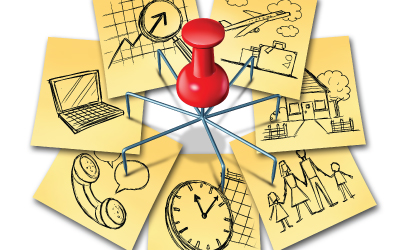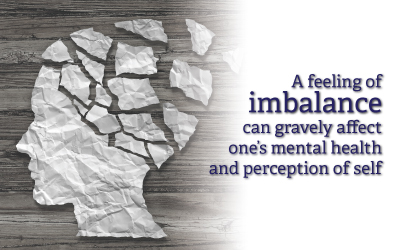Workplaces can help women speak out

Kristina Bell is Community Engagement Specialist with United Way London & Middlesex, working on ensuring community members are closely connected to the strategic work of United Way and its partner agencies through volunteerism and advocacy initiatives and that they have the opportunity to witness first-hand the difference that their investment is making to improve lives locally. In her role, she also collaborates on projects regarding volunteer management, internal training and development, and chairs the United Way Sunshine Committee focused on workplace wellness and mental health.
In her spare time, she operates a small business specializing in commissioned art and murals and is an active community volunteer with many local organizations including Ronald McDonald House and Goodwill’s Bridges out of Poverty other. She is also gearing up to teach her first course with Western Continuing Studies in March.
In years past, Kristina has worked as an educator with the Toronto Catholic District School Board, a Marketing Specialist in many facets of Ontario’s horse racing industry, and in many divisions of Toronto’s Ministry of Parks and Recreation. In every professional adventure she has had, she can attest to the importance of a solid wellness backbone.
Kristina holds a BAH in Psychology and Ethical Philosophy from Queens University and a BEd from York University with specialists in both Special and Experiential Education. She shares her home with her husband Brent and two dogs, Buttons and Ladybug.
It has been my observation that the anticipated response to the age old question ‘how are you?’ has evolved from the vague, but generally optimistic ‘fine, and you?’ to ‘BUSY’. The deeper I dig, the more I realize that almost everyone I know is carefully teetering their way across the tight-rope we call life, straining to balance the cyclical demands of their everyday- family, friends, career, health, education, professional development, care of dependents, recreation, social obligations, volunteerism. The list goes on and on.

Where one finds themselves on the continuum of ‘wellness’ depends entirely on how they perceive themselves either struggling or excelling at balancing these competing responsibilities. When things are going well, we feel like we are winning at life, like we are ‘adulting’ in some fruitful way. We feel physically healthy, our relationships are strong, our career is on track and things are delightful. When our wellness and sense of balance is under attack, feelings of frustration, inefficiency, and defeat creep in and, well, mess everything up. A feeling of imbalance can gravely affect one’s mental health and perception of self as well as their perceived success as a parent, friend, employee, or leader.
With more spotlight on the notion of wellness in both mainstream media and ordinary conversation, organized workplace wellness programs have picked up a significant amount of steam in recent years. While perhaps not obviously correlated to the bottom line, the findings of recent substantiated research that show an increase in productivity, job satisfaction and professional longevity among employees of organizations who offer effectual wellness programs are not surprising. From personal experience, the need for such programs is even more evident among non-profit teams who often work long, emotionally draining hours, often for less fiscal compensation than their for-profit colleagues.
That being said, not every wellness program is created equal and a wellness program created merely to tick a checkbox, without considering the needs of your team, can end up being a costly flop. After taking a long, hard look at our organization’s wellness platform grow and evolve over the past couple of months, the consensus seems to be that the following four factors ought to be taken into consideration when taking the wellness leap.
1. Ensure your wellness program aligns into your organization’s culture or cause.
There is an opportunity increase organizational loyalty and alignment with a well-structured wellness program if it skillfully reflects the mission, vision and values of your organization. As an example, our United Way Reads staff book club selects titles that reflect our social impact areas (mental health, poverty, and beginnings and transitions). In addition, after a two-part staff workshop on compelling storytelling, we implemented regular Toastmasters-style drop-in sessions for team members to practice their skills in a safe space. These two activities are branches of our wellness program and are successful because they boost both wellness and workplace camaraderie while at the same time strengthening our team’s insight into and commitment to the work we do as an organization.
2. Offer a variety of engagement outlets to increase inclusivity.
Wellness needs are different for different people at different times and your program should welcome participants to ‘choose their own adventure’ based on what they find appealing and what will improve their personal equilibrium. A well-balanced wellness program should include activities that target different centers of well-being- emotional, physical, psychological, and intellectual. A few examples might include a book club, a lunchtime walking/skating group, guest speakers (nutritionist, expert in RRSPs, stress management specialist, etc.), adult colouring books in lunch room, visionary exercises, salad club, corporate team volunteering, therapy dog days, yoga/fitness classes or fitness subsidies for staff, Toastmasters sessions, accessible personal days- there is no shortage of ideas!
3. Ensure buy-in from upper management & that the SPACE IS SAFE
A barrier that many organizations face is that there remains an antiquated stigma that workplace wellness is a soft HR strategy, established mainly for women. Truth is that both men and women at all tiers of an organization and at all stages of their professional lives are seeking flexibility to achieve a better work-life balance. They should not feel that participation is in any-way a career-limiting move and should be supported to participate from the top down. Organizational leaders should keep top of mind the many benefits including increased productivity, organizational loyalty, reduced absenteeism, and improved job satisfaction.
4. Initial Assessment, Feedback and Evaluation
Ongoing analysis and refinement is crucial for any successful program and should include these three components - an initial wellness assessment of your team to help design the program to suit your audience, ongoing feedback opportunities while the program grows from its infancy and lastly, an opportunity to measure and evaluate the success of the program at the end of a full term/year. Wellness is a personal journey and a strong wellness program will actively and keenly reflect and adapt to your workplace community.

Like any strategic approach to health mandates for employees, wellness programs are most effective when they are tenaciously designed and supported and can garner countless constructive benefits to an organization’s success with regards to staff retention, job satisfaction ratings, productivity, culture, innovation and bottom line. In other words, wellness works!








